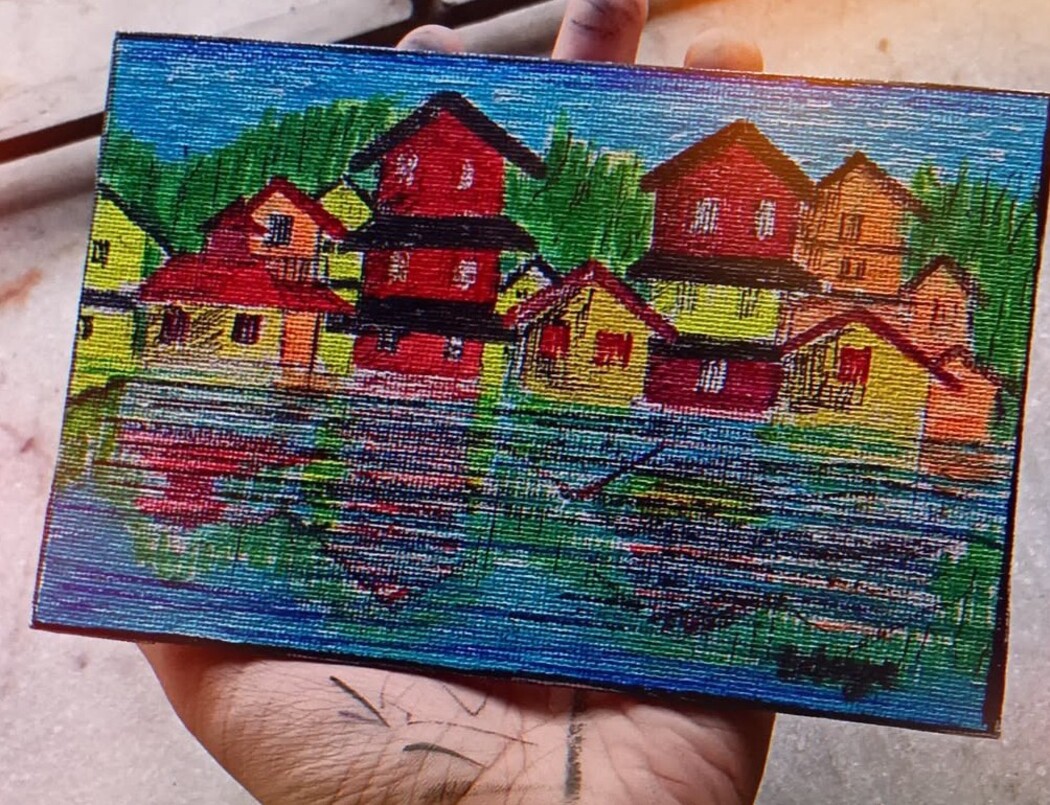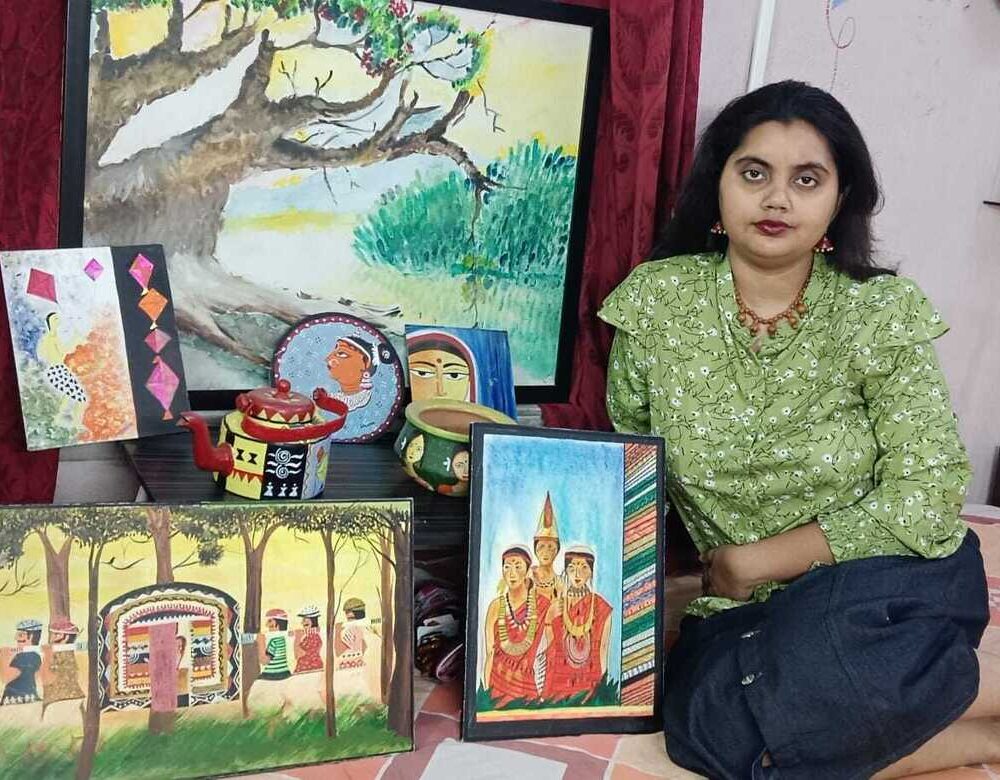Labanya Das
Year of birth: 15.1.1996.
Where do you live: India.
Your education: M.A., B.Ed. Currently I am pursuing M.Ed.
Describe your art in three words: thought-provoking, unrestrained, and emotive.
Your discipline: My discipline is the fusion of different artistic mediums and forms where tradition meets modernity. This helps me to convey my deepest emotions, to explore the depth of human emotions, and to depict the beauty of nature and human nature.
Can you tell us about your earliest memory of creating art? What first inspired you to pick up a brush?
My journey of creating art began when I was three years old. I remember that one day I woke up and saw the mesmerizing, vibrant, and polychromatic hues that filled the sky—the oranges, pinks, purples, and blues all melting into each other like a living painting. That moment I realized there was something deep inside me that longed for freedom of expression. I didn’t have the words for it at the time, but I felt an overwhelming urge to capture that beauty. Then I picked up the brush and captured the beauty of the sky. The picture was bereft of any artistic technique, but it was filled with my admiration for beauty and the warmth of nature. That sunrise became the spark that ignited my journey into art.
Your paintings reflect a deep love for nature and emotional storytelling. What themes do you find yourself returning to again and again?
I am a nature worshipper living in the jungle of concrete. That’s why I have chosen my art to be the medium to express my latent desires to reconnect with the beauty of nature. The other themes that I often return to in my paintings are the abstract emotions—the mixed, anonymous, and inexplicable emotions. Freedom, both in spirit and expression, is central to my artwork. Another recurring theme of my artwork is love—love for the people, love for the unknown, love for freedom, and love in its true sense.

You also write poetry. How does your writing influence your visual art, and vice versa?
Poems are the paintings of our mind, and paintings are the poems of our expression. Thus, both the poems I compose and the paintings I create complement each other. Poetry allows me to explore the ideas in their unadulterated and raw form through the tools like rhythm, rhyme, figures of speech, and wordplay. This in turn expands the imaginative faculties and helps me to give shape to those expressions and emotions through brushstrokes. The same happens when I paint. -whether it’s nature or my emotions rendered in vivid colors, the act of painting feeds my mind with ideas, texture, emotions, and a mood to work with.
One of your artworks combines portraiture with symbolic elements like birds, kites, and butterflies. What do these symbols mean to you?
In my artwork I use symbols like birds, kites, and butterflies. Birds stand for freedom, unbounded by the clutches of drudgery, with an open access to the wide blue sky. Kites also symbolize freedom and the longing to breathe in the open air. But it still is not bereft of human connection. The kites act as a bridge between unended freedom and the grounding. The butterflies represent transformation and personal growth. Together, these symbols reflect my belief in the power of freedom, growth, and the fluidity of life.

How does your Indian heritage influence your artistic choices in color, composition, or symbolism?
My Indian heritage significantly influences my artwork in color, composition, and symbolism. The vibrant hues of yellow, red, and blue represent the cultural and traditional significance of India, her passion, her glory, and my admiration for the nation. India is a multicultural and diverse country with a multitude of languages, cuisines, art forms, ethnicities, and identities of people. Still, there is a sense of unity that I strive to capture by blending the core essence of both mother-nature and human nature, traditions and modernity.
You work across different formats—from traditional nature scenes to stylized human figures. How do you decide what style or medium to use?
It all flows from the emotions I want to convey. If I want to convey the soft palettes of nature, I choose watercolor as my medium. I use acrylic colors to depict bold human figures, human texture, and raw human emotions. I don’t follow a fixed personal style. But generally I believe in traditional modernity. That’s why I love to blend traditional and modern art to symbolize the true essence of freedom.
What role does emotion play in your creative process? Do you paint from feeling, memory, or imagination?
Yes, emotion plays a significant role in my creative process. Emotion guides my brush and shapes my vision. Often, I paint from feeling, memory, and imagination. Sometimes memories drive my emotions, and fleeting feelings become the spark. Imagination weaves these three elements together and helps me to express the unforeseen and unexplored domains of the mind.


Leave a Reply